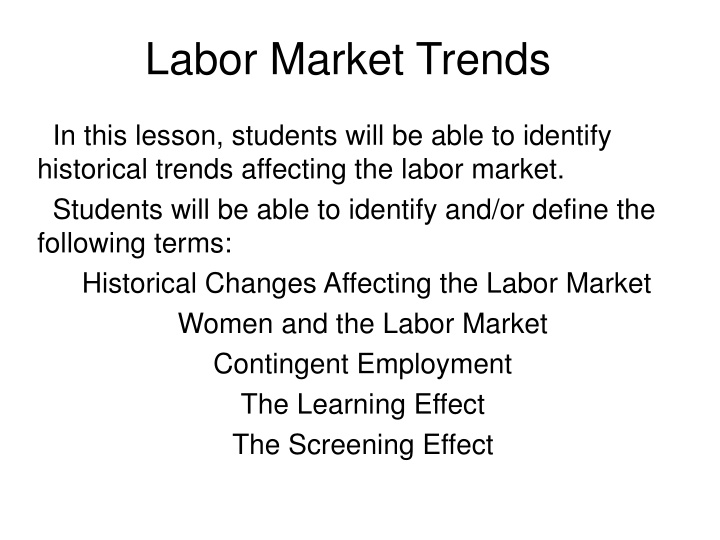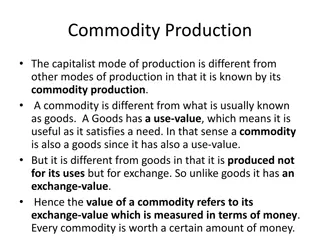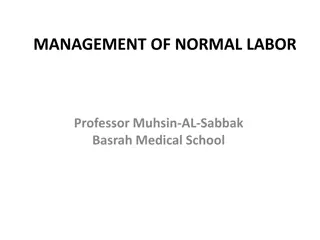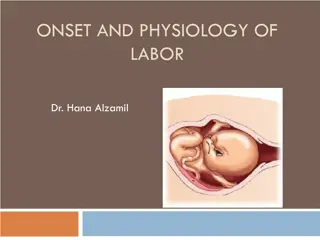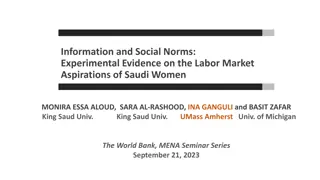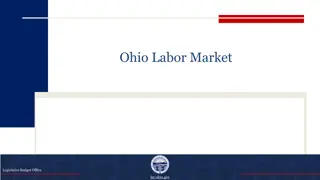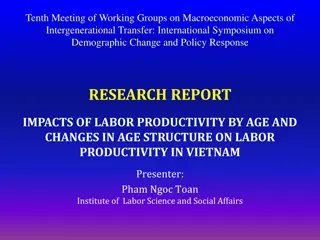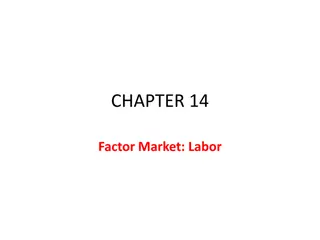Evolution of the Labor Market: Historical Trends and Women's Participation
Explore the dynamic historical shifts in the labor market from farming to manufacturing and the rise of women's participation. Discover how technology, such as computers, has transformed work environments, alongside the challenges like the glass ceiling. Unveil the factors influencing women's increased workforce involvement, from education to economic necessity.
Download Presentation

Please find below an Image/Link to download the presentation.
The content on the website is provided AS IS for your information and personal use only. It may not be sold, licensed, or shared on other websites without obtaining consent from the author.If you encounter any issues during the download, it is possible that the publisher has removed the file from their server.
You are allowed to download the files provided on this website for personal or commercial use, subject to the condition that they are used lawfully. All files are the property of their respective owners.
The content on the website is provided AS IS for your information and personal use only. It may not be sold, licensed, or shared on other websites without obtaining consent from the author.
E N D
Presentation Transcript
Labor Market Trends In this lesson, students will be able to identify historical trends affecting the labor market. Students will be able to identify and/or define the following terms: Historical Changes Affecting the Labor Market Women and the Labor Market Contingent Employment The Learning Effect The Screening Effect
Do Now What is the glass ceiling? An invisible barrier that prevents women from advancing in the workplace.
At its founding, the United States was a nation of farmers.
From Farms to Factories At the time of the American Revolution, most Americans were farmers. However, in the North, agriculture yielded to the Industrial Revolution in the early 1800s. Eventually, manufacturing jobs replaced many agricultural jobs.
With the coming of the Industrial Revolution, many Americans became factory workers.
From Radio to Computers By the mid-twentieth century, the United States experienced a boom in electronics, radio, and television. Many Americans found work in this new arena. However, by the 1970s, the personal computer revolution began. The labor market is continually changing.
Computers revolutionized work and the workplace. The production of services has increased while manufacturing has decreased.
Women and Work Women have greatly increased their participation in the workforce. There are many reasons for the increased participation of women in the workforce. Increased education, higher divorce rates, and the need for two salaries has led many women into the workforce.
Women have greatly increased their participation in the labor force.
Contingent Employment There has also been a rise in contingent employment. Contingent employment is a temporary job. A worker is hired for a specific project or a specific period of time. Employers typically do not provide fringe benefits.
Contingent employees do not receive the benefits of permanent full-time employees.
Theories Concerning Education There are two theories as to why educated workers make more money. The Learning effect states that education increases productivity. The Screening effect states that completing college indicates intelligence.
Does completing college increase productivity or reveal intelligence?
One thing is clear about the labor market, change is inevitable.
Questions for Reflection: How has the labor market changed over the course of time? Why do more women work? What is an advantage and a disadvantage of contingent employment? How does the learning effect differ from the screening affect? Why has manufacturing decreased and the production of services increased?
